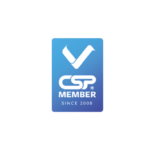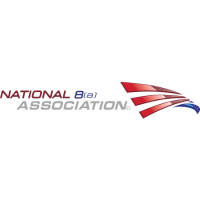
How to Balance Competitiveness and Profitability with Your Bill Rate vs. Pay Rate
By: Ed Burr, Director of Client Growth and Strategy
Ed is a dedicated consultant for Encore clients with 20 years of experience in staffing and operations. He’s passionate about building client connections and overcoming challenges with personalized solutions as someone who has been in your shoes.
As a staffing entrepreneur, you’ve likely discovered that setting the right bill rate vs. pay rate is a balancing act that can make or break your agency’s success. A misaligned pricing strategy can either send clients to competitors if it’s too high or erode profitability if it’s too low.
Simply put, if you are pricing for competition rather than profitability, your pricing strategy is undermining your work.
Take a Balanced Approach to a High-Stakes Decision
I recommend creating a quick pro forma spreadsheet to ensure your pricing is aligned with your expense operations. A pro forma statement uses hypothetical scenarios to build a financial report for your business. It’s a way to test bill rates vs. pay rates without breaking the books.
Below, I’ll share how to understand true labor costs beyond wages, the role the competitive market plays, and how to leverage payroll funding to maintain cash flow and competitive pricing.
Understand True Labor Costs Beyond Wages
I’ve seen it many times: staffing agencies are so excited to get a new account that they throw out a price without considering other hidden costs beyond the pay rate. It’s a fundamental mistake to look at pay rates in isolation.
True labor costs extend far beyond the base wage you pay your workers, and you have to factor that into your billing.
You should consider:
- Payroll taxes: Social Security, Medicare, and unemployment taxes add significant overhead to each employee’s total compensation.
- Workers’ compensation: Industry-specific insurance requirements can vary and will impact your pricing strategy. This can be the largest expense for your company after payroll.
- Benefits and insurance: Health insurance, retirement, and other benefits will help attract top talent, but they add substantial costs.
- Operational expenses: Administrative costs, recruiting, screening, and ongoing management also factor into true labor costs.
These hidden expenses mean that your bill rate should absorb fluctuating costs without constant renegotiation. Most of the costs attached to any sort of billing arrangement do not change frequently, but it helps to have ongoing meetings with your clients. Together, you can review your performance and discuss the factors that may increase their rates.
Track your profits and losses (P&Ls) to ensure your bill-to-pay rate ratio remains sustainable. Review your P&Ls monthly and adjust accordingly.
Set Competitive Rates That Attract Clients Without Undercutting Profitability
Your ability to set competitive rates starts with industry analysis and regional pay rate trends.
- Industry benchmarking: Analyze regional and industry-specific pay rates to find trends.
- Skill-based pricing: Technical expertise, specialized skills, and experience influence pay and bill rates.
- Economic responsiveness: Your pricing model should adapt to market demand, industry shifts, and economic conditions.
An effective pricing strategy requires communication with both your clients and your employees. They will be the first to tell you about market shifts that impact bill rates vs. pay rates.
You can justify a higher bill rate by communicating your expertise, experience and value. I’ve found that transparent client communication is key. This will not only allow you to change bill rates, adjust pay rates, and handle employee issues, but it will keep your client engaged and prevent arbitrary switches to different services just because of the bill rate.
Don’t forget: You are building a client relationship and establishing client value.
Leverage Payroll Funding to Maintain Cash Flow and Competitive Pricing
Payroll funding helps staffing agencies bridge cash flow gaps caused by delayed client payments. Payroll funding is a flexible solution based on your company’s needs – it can grow or shrink with demand week to week. It’s the key to our client’s ability to offer competitive pay rates.
Benefits of payroll funding:
- Cash flow management: Payroll funding helps bridge the gap between paying employees and receiving client payments, allowing for more competitive and flexible pricing.
- Opportunities to scale: Take on larger contracts without cash flow limitations.
- Risk mitigation: Count on consistent payroll funding, even when client payments are delayed.
My advice to staffing companies struggling to set profitable and competitive rates is to work with your funding company. At Encore Funding, we discuss your cost structure of bill rates vs. pay rates and funding based on industry trends and economic shifts. When you work with us, it’s a partnership – your success is our success, too.
The Long-Term Strategy for Profitability
Balancing bill rates vs. pay rates is more art than science. You need to understand your true labor costs and keep tabs on market changes. You also need to communicate a value-driven approach to pricing with your clients.
Your pricing strategy should never be set in stone — it should adjust as the market changes. Having a trusted funding company can help you develop a pricing strategy that acts as your competitive edge.
When you’re ready to work with a funding company that guides you to achieve your vision of success, contact our team.

 216-998-9900
216-998-9900







